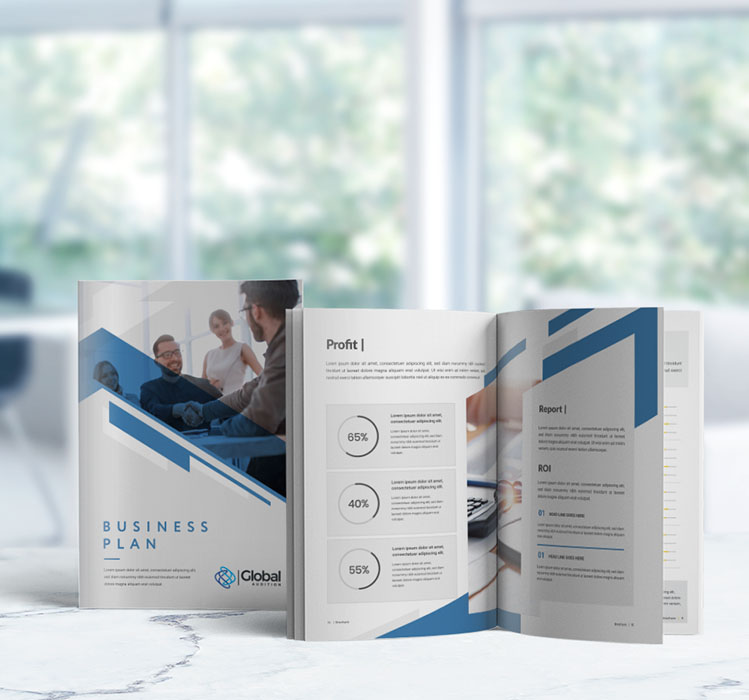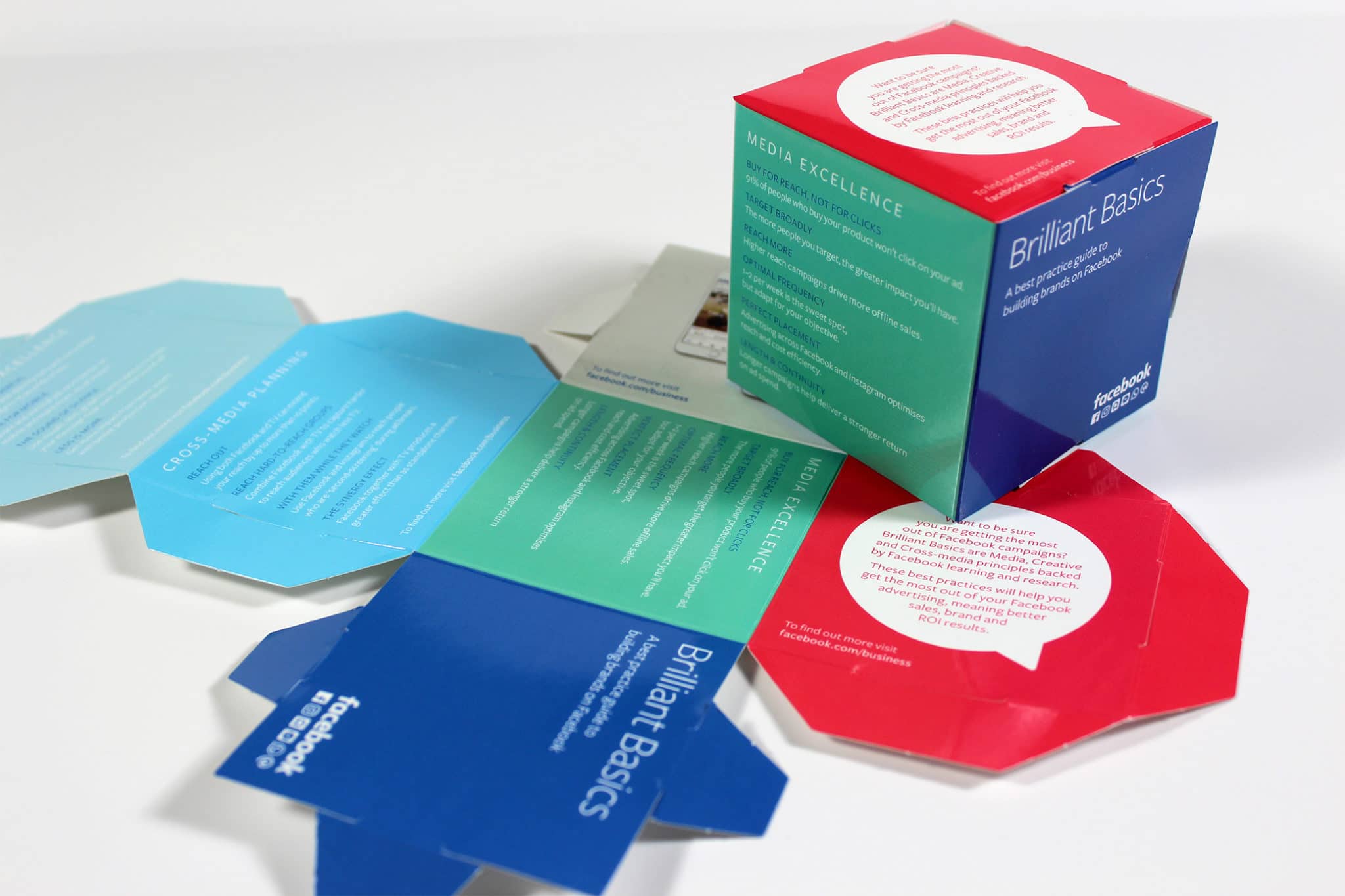Booklets are an example of traditional advertising, using printed materials to provide information and context to new readers and potential customers. If executed properly, this strategy can lead to a high return on investment (ROI).
But what does it take to achieve that high ROI?
The Basics of Booklet Advertising

Printed booklets are relatively short, traditionally printed materials that typically feature a combination of visuals (like graphs and photos) and written text. Sometimes, they are purely informational, providing people with educational content on a given topic. Sometimes, they’re heavy on sales, showcasing new products and providing people with options to buy them. Sometimes, they’re merely incidental, providing supplementary information for a presentation or an event.
Using booklets as a form of advertising can be highly effective in raising awareness of your brand and driving people to purchase products. You might use it to tell the story of your brand to people who are hearing about it for the first time. You can use it to showcase case studies and testimonials, proving the good work that your business does. You can even use it to explore your products and services to motivate people to make a direct purchase. It’s up to you.
How can you tell if your booklet advertising is working?
You need to calculate ROI.
The ROI Equation
In marketing, return on investment (ROI) is calculated using variables from two main categories: expenses and benefits. It’s a relative measure of how much money you make, compared to how much you spent on the campaign. For example, if you spend $5,000 on printing and distributing booklets, and you make $10,000 in new sales because of your efforts, you can call that a 200 percent return on investment.
As long as your ROI is positive, you can say that the strategy is working. But obviously, the higher your ROI is, the better the strategy is doing.
What steps can you take to boost the ROI from your booklet advertising?
Key Strategies to Achieve a High ROI From Booklet Advertising

These are some of the best strategies for increasing the ROI of your booklet advertising strategy:
- Choose the right printer. First, choose the right printer. Shopping around, you should be able to find printers that offer lower prices and faster turnarounds, ultimately decreasing the expense side of the ROI equation and pushing ROI higher. Additionally, good printing companies have excellent quality controls and attention to detail, meaning your finished products are going to be much more attractive to your prospects and customers.
- Work with experienced professionals. Throughout every stage of the advertising process, you should work with experienced professionals. You need to have knowledgeable marketers and advertisers to help you plan the high-level strategy. You need to have experienced graphic designers to help you assemble the material. And you need to work with printers and distributors who have good reputations. Better people make a better product.
- Splurge on better materials. Next, consider splurging on better materials for your booklet. You can save some money on the expense side of the equation by switching to a cheaper paper stock, but this can make your booklet look unprofessional, ultimately defeating the purpose. Spending a bit more on materials can often lead to a much higher ROI.
- Speak to your target audience directly. To the extent you can, speak to your target audience directly. Too often, advertisers attempt to create a universal appeal, speaking in a way that could hypothetically resonate with anyone. But this usually has a counterproductive effect, alienating people with vague and general language. Instead, increase your relevance with a niche target audience.
- Polish a perfect call to action (CTA). A call to action (CTA) is a prompt that encourages a reader to take a specific action. For booklet advertising, that could mean making a purchase, calling a specific number, visiting a website, or something else entirely. Whatever your goal in booklet advertising is, you need to have a CTA connected to it.
- Run AB tests. Consider distributing two different versions of your booklet advertisement, so you can compare how they perform. This is known as an AB test. With enough AB tests, you’ll get a much better feel for the types of elements that resonate with your target audience.
- Proofread! Always proofread your booklet before sending it to print. Even a single typo can make people see your brand in a negative, unprofessional light.
- Review the data and adjust. Measure your effectiveness, analyze your data, and be ready to adjust for future booklet printing efforts.
Booklet advertising is a traditional, printed advertising strategy, but you shouldn’t count it out just because digital advertising is newer and more commonly discussed. The truth is, this can be a highly profitable form of advertising – as long as you know how to use it properly.
Utilizing Digital Enhancement in Booklet Advertising

In the era of digital marketing, integrating digital elements into your booklet advertising strategy can significantly boost your ROI. Digital enhancements such as QR codes, augmented reality (AR), or website links encourage readers to interact with your brand on multiple platforms. Incorporating QR codes can direct readers to your online store, promotional videos, or digital coupons, creating a seamless bridge between the physical booklet and the digital world. Likewise, AR features can provide an immersive experience, making your booklet memorable and engaging.
Optimizing Distribution for Maximum Impact
Distribution is a critical factor in achieving a high ROI from booklet advertising. Your effort in creating an appealing booklet may fall flat if it doesn’t reach the right audience. Research and identify the demographics and locations where your potential customers are most likely to be found. Consider various distribution channels such as direct mail, event handouts, or retail store distribution to ensure your booklet reaches a wider audience. Tailoring your distribution strategy by aligning it with your target audience’s behavior and preferences will result in a higher engagement rate. Additionally, partnering with other local businesses or community events for distribution can expand your reach and improve the chances of your booklet being seen by potential customers.




